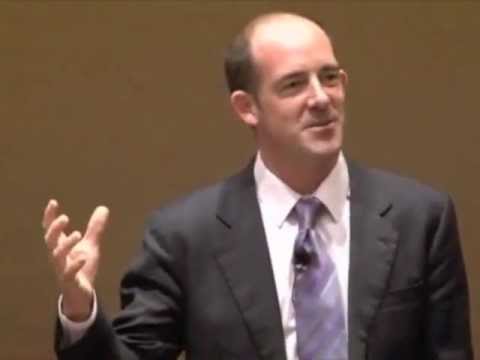In today’s competitive environment, professional speaking skills play a pivotal role in captivating audiences and delivering inspiring presentations. Whether you’re crafting a keynote address or telling your story on an intimate stage, your success hinges on how well you connect, engage, and motivate those who listen. It’s vital to adopt effective strategies that resonate with audiences and yet, establish you as an authority in your niche. Let’s embark on this journey together and explore the seven essential professional speaking skills that can elevate your presentations to new heights.
![Professional Communication Skills [BUSINESS COMMUNICATION PRO]](https://www.conniepheiff.com/wp-content/cache/flying-press/WESGDi_ajUU-hqdefault.jpg)
7 Essential Professional Speaking Skills for Engaging Presentations

1. Storytelling: Weaving Narratives that Connect
Storytelling isn’t just a skill; it’s an indispensable tool in a speaker’s arsenal. Renowned speakers like Brené Brown harness personal tales to create a bond with their audience. During her TED talks, she shares poignant experiences, drawing listeners into her reality while unpacking profound lessons about vulnerability and courage. As you craft your narratives, draw from your journey—authentic stories resonate deeply, making your messages unforgettable.
To truly captivate, infuse your stories with emotion. Design them to evoke laughter, tears, or even epiphanies. When you shift from simply relaying facts to sharing experiences, you encourage your audience to connect with you on a personal level.

2. Active Listening: Engaging with Your Audience
Active listening is a game-changer in the landscape of professional speaking. It sets the stage for meaningful interaction and adapts your message in real-time. Oprah Winfrey exemplifies this skill perfectly; her interactive sessions thrive on her keen ear for audience feedback. By listening attentively, you can pivot your speech based on the audience’s energy and responses, ensuring each person feels valued.
Incorporating active listening doesn’t mean altering your entire message; it’s about embodying flexibility. So, ask open-ended questions, pause for engagement, and encourage dialogue. Tailoring your delivery boosts audience interest and engagement and ensures they walk away feeling inspired.
3. Body Language: Non-Verbal Communication That Speaks Volumes
What you say often pales compared to how you say it. Body language serves as the silent interlocutor between you and your audience. Tony Robbins exemplifies the effective use of expansive gestures and commanding stances. His vibrant movement on stage energizes the atmosphere and reinforces his authority.
Understanding how posture, gestures, and facial expressions amplify your message can significantly enhance its impact. For instance, stepping closer to your audience creates intimacy, while open gestures promote trust. Master your physical presence to ensure your message is communicated both verbally and non-verbally.
4. Vocal Variety: The Power of Tone and Pace
When words fall flat, vocal variety brings life back into your presentation. Not every point should be delivered with the same volume or fervor. Speakers like Simon Sinek showcase how pitch modulation, speed variation, and volume shifts build anticipation and keep audiences spellbound.
Don’t shy away from practicing your vocal cues. Utilizing pauses effectively can emphasize powerful statements, while energetic bursts can spark excitement at key moments. Mastering these elements transforms you from a speaker into an unforgettable performer who holds the audience’s attention throughout.
5. Clarity and Structure: Simplifying Complex Ideas
Great speeches clarify the convoluted. Clarity and structure are vital in presenting intricate ideas—for example, Amy Cuddy has set the bar high with her concise TED presentations. By breaking down complex psychological concepts into bite-sized pieces, she systematically guides her audience through her narrative.
Adopt frameworks that resonate with your topic. Use bullet points or charts if needed. A clear introduction and smoothly transitioning sections enhance comprehension and retention. Your presentation’s structure should allow your audience to grasp key points effortlessly.
6. Q&A Mastery: Navigating Audience Interactions Smoothly
A well-executed Q&A can make or break your presentation. Mastering Q&A sessions is an art many overlook. Take cues from Michelle Obama, who navigates audience questions with composure while redirecting tangential inquiries into shared themes. This approach not only shows confidence but positions you as an expert.
Prepare by anticipating potential questions to guide your responses. If a question stumps you, don’t fret—acknowledge it gracefully and pivot back to core themes. Effective management of Q&A sessions enriches audience interaction, reinforcing your expertise and establishing rapport.
7. Authenticity: Being True to Yourself
When in doubt, be yourself! Authenticity is your superpower as a speaker. Barack Obama’s candid delivery style exemplifies this truth—his openness establishes trust and relatability with his audience.
Dare to share your vulnerabilities and anecdotes that shape your worldview, driving home the importance of integrity in your presentations. Audiences connect better when they see a genuine person rather than a polished facade. Embrace your uniqueness; it’s your best asset.

Cultivating Your Professional Speaking Skills: A Forward-Looking Approach
Enhancing your professional speaking skills takes time and commitment. Pursue opportunities to perform in front of diverse audiences and value constructive critique. Continuous learning is paramount; consider joining speaking organizations, attending workshops, or practicing in front of a mirror.
Participate in global events like TEDx or industry-related conferences—watch successful speakers in action and emulate their techniques to develop your style. Engaging with podcasts featuring speaking coaches can also spark new ideas and offer strategic insights.
Looking ahead to 2024, amplifying these skills will empower you to inspire others and implement change. Each speaking engagement presents an opportunity to create a profound impact—so seize the moment! Remember that incorporating professional speaking skills into your arsenal will establish your brand and propel you toward professional opportunities.
Your journey doesn’t start tomorrow; it begins now. Take that first step, redefine what it means to captivate and inspire, and you’ll be well on your way to becoming the speaker you’ve always envisioned. Now, if you’re ready to dive deeper, check out our motivational speaking course or learn how to become a keynote speaker which will guide you in amplifying your skills with public speaking training.
Embrace the power of public speaking—it’s time to captivate, inspire, and change the world one presentation at a time!

Professional Speaking Skills That Captivate and Inspire
Engaging Through Fun Trivia
Did you know that the art of professional speaking has its roots in ancient history, dating back to oratory giants like Aristotle and Cicero? These figures didn’t just share ideas; they led revolutions with words. It’s no wonder great communicators can inspire people and change minds. Speaking is more vital than ever—think about the impact of a successful pitch or even a heartfelt TED talk. The magic of professional speaking skills is in the connection you create with your audience. Speaking effectively can be even more pertinent when discussing topics like What Is title insurance or navigating tricky family conversations about addiction help For Families, showcasing how effective communication can bridge gaps in understanding.
Transitioning from history to modern times, it’s interesting to note that the popularity of public speaking has surged with social media. Influencers, for instance, harness their professional speaking skills to engage massive audiences at a dizzying pace. It’s a digital stage where personal brands shine! Speaking of personal branding, have you ever considered the unique charm a pet monkey For sale might add to your social media presence? While that’s a bit tongue-in-cheek, it emphasizes that personality matters just as much as content when speaking. After all, a captivating delivery can make even the most mundane topic come alive, just like the ever-changing weather—like that Clima de 10 Días para Newark that can catch anyone off guard!
Lastly, let’s touch on the importance of being relatable. Audiences tune in when they feel a connection to the speaker. The best speakers weave personal anecdotes into their presentations, making them more memorable. Did you know that many successful speakers often draw inspiration from contemporary issues, even ones as heavy as “Epstein’s list”? This technique can spark tough discussions and push the envelope of comfort with skill. The key takeaway? Your professional speaking skills can transform challenging subjects into compelling stories, reinforcing that the heart of communication lies not just in speaking but in truly connecting.

How do you speak professionally?
To speak professionally, focus on clear articulation, maintaining eye contact, and using a confident tone. Make sure your body language is positive and engaging to keep your audience interested.
What is a characteristic of professional speaking?
A key characteristic of professional speaking is the ability to connect with the audience. This means understanding their needs and interests and tailoring your message to resonate with them.
How to practice professional speaking?
Practice professional speaking by rehearsing in front of a mirror, recording yourself, or presenting to friends or family. These methods help you refine your delivery and build confidence.
What are good speaking skills?
Good speaking skills include clarity in your message, appropriate pacing, good pronunciation, and effective use of pause. It’s also important to be aware of your audience’s engagement and adapt as needed.
How to speak like a professional speaker?
To speak like a professional speaker, focus on your message, keep it relevant, and use storytelling techniques to engage your audience. Emphasizing emotional connection can make your speech memorable.
How do you speak politely and professionally?
Speaking politely and professionally involves choosing your words carefully, using respectful language, and listening to others. It’s all about creating a positive atmosphere through your words and actions.
How to improve speaking skills?
Improving speaking skills takes practice. Join a public speaking group, take speaking classes, and solicit feedback. Consistent effort will help you enhance your abilities over time.
How to be a better speaker?
Becoming a better speaker means continually seeking growth opportunities, practicing regularly, and embracing constructive criticism. Reflecting on past performances can also help identify areas to improve.
What are the three qualities of a good speech?
A good speech has three main qualities: it’s well-structured, clear, and engaging. The audience should easily understand the main message and feel connected to what you’re saying.
How to speak confidently and clearly?
To speak confidently and clearly, practice deep breathing to calm nerves and project your voice. Slow down your speech, articulate your words, and maintain a steady tone to convey confidence.
How do you start a professional talk?
Starting a professional talk is best done with a captivating introduction. Grab your audience’s attention with a story, a compelling fact, or a provocative question to set the tone for your message.
How can I sound more professional in speech?
To sound more professional in speech, avoid slang and overly casual phrases. Instead, use precise language, speak at a moderate pace, and focus on clear, simple wording to convey your ideas effectively.
How do you speak professional language?
Speaking professional language means using jargon correctly, being concise, and expressing ideas in a way that’s understandable and relevant to your audience. It’s about adapting your language to suit the context.
What does it mean to talk professionally?
Talking professionally means being articulate, respectful, and clear. It also involves listening actively and engaging with your audience, making sure to create an open and honest dialogue.
How do you speak and behave professionally?
Behaving professionally includes being punctual, dressing appropriately, and maintaining a positive attitude. Remember, how you present yourself both verbally and non-verbally makes a big impact.
How do you start a professional talk?
Starting a professional talk should always involve a strong opening line to hook your audience. Consider using a relevant quote, an interesting statistic, or an engaging story to draw people in from the get-go.









